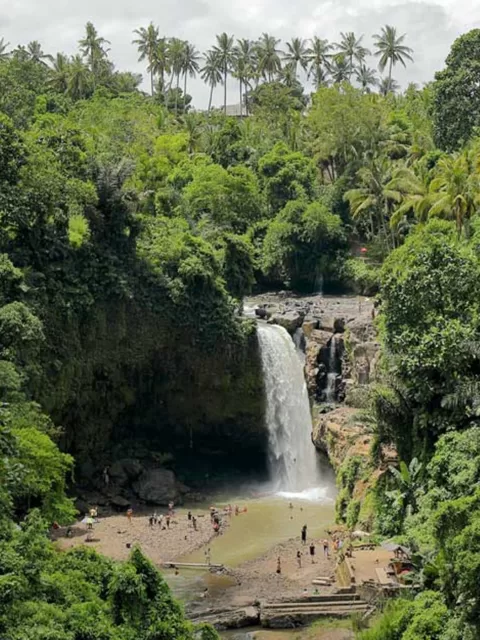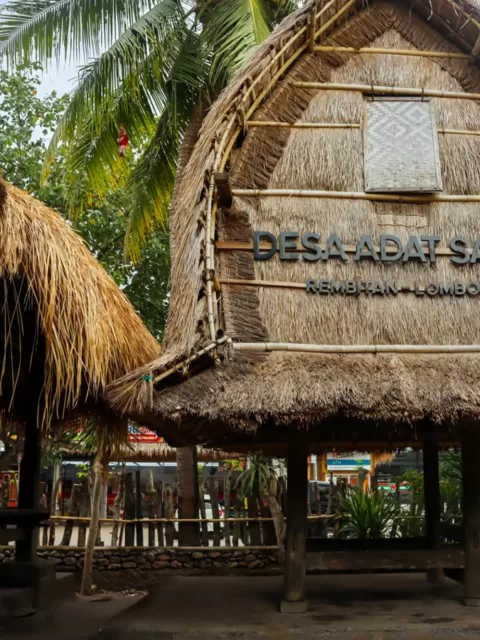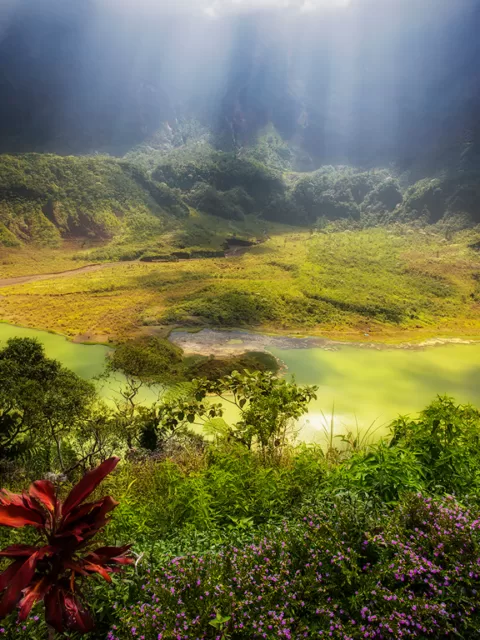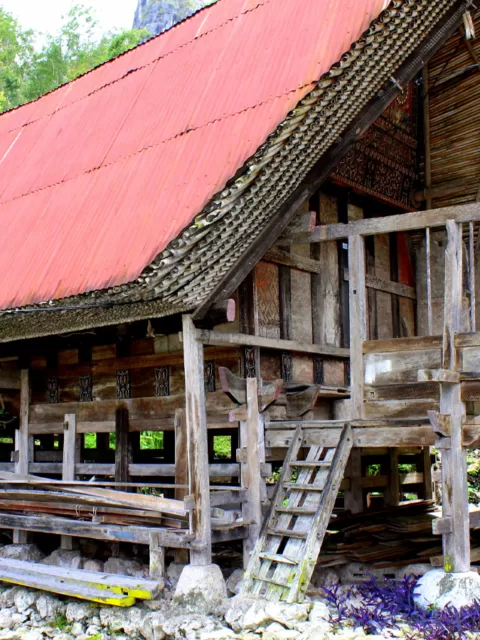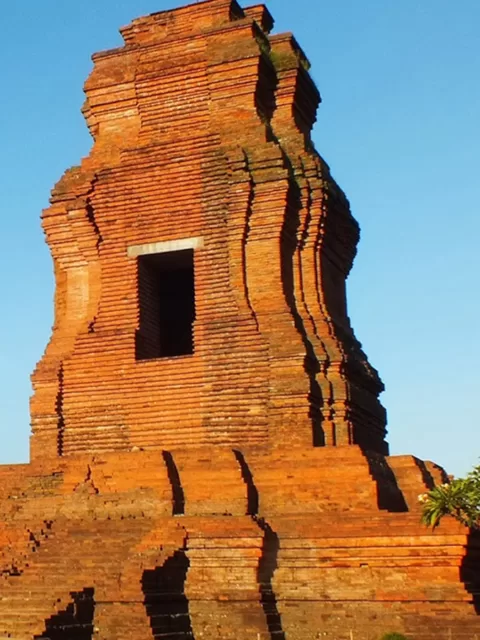Step Back in Time to Umbul Temple, Magelang’s Ancient Hindu Oasis
Overview
Nestled amidst the verdant hills of Central Java, Indonesia, lies a hidden gem that whispers tales of a bygone era – Umbul Temple, an ancient Hindu sanctuary that has stood the test of time, preserving the echoes of a glorious past. Its very name, Umbul, meaning “spring” in Javanese, alludes to the life-giving waters that flow from its depths, believed to possess healing and rejuvenating powers. Step back in time and embark on a journey to Umbul Temple, where spirituality, history, and natural beauty intertwine to create an unforgettable experience.
Historical Context
Umbul Temple’s origins can be traced back to the 9th century, during the reign of the Mataram Kingdom, a powerful dynasty that ruled over much of Central Java. This era witnessed a flourishing of Hindu art, architecture, and culture, and Umbul Temple stands as a testament to this golden age. Initially constructed as a royal bathing complex, the temple served as a place of purification and spiritual rejuvenation for the Mataram kings. Its sacred waters, believed to be imbued with divine blessings, were thought to cleanse the body and soul, preparing the royals for their spiritual pursuits.

Over the centuries, Umbul Temple has endured the vicissitudes of time, bearing witness to the rise and fall of empires and the ebb and flow of civilizations. Despite the passage of time, the temple has retained its essence, its stone structures and intricate carvings whispering tales of a glorious past. Today, Umbul Temple stands as a poignant reminder of the rich cultural heritage of Central Java, a beacon of spirituality that continues to draw pilgrims and visitors from across the globe.
Architectural Marvel
Umbul Temple’s architecture is a harmonious blend of Hindu symbolism and artistic finesse. The temple complex comprises two main bathing pools, fed by natural springs that are believed to possess healing properties. These pools are surrounded by a series of stone structures, adorned with intricate carvings and sculptures depicting Hindu deities, mythological creatures, and floral motifs. The main shrine, or candi, stands tall and proud, its towering presence commanding respect and awe. Its pyramidal structure, adorned with elaborate carvings, symbolizes the ascent toward spiritual enlightenment.
The temple’s layout reflects the Hindu cosmological concept of Mount Meru, the sacred mountain at the center of the universe. The bathing pools represent the earthly realm, while the candi symbolizes the celestial realm. The alignment of the temple structures with the cardinal directions further reinforces this cosmic connection. The temple’s intricate carvings and sculptures are not merely decorative; they convey profound spiritual and philosophical messages. Each carving tells a story, and each sculpture embodies a symbol, adding layers of meaning and significance to the temple’s overall design.
Spiritual Significance
Umbul Temple holds deep spiritual significance for the local community and Hindu pilgrims from across the region. It is believed that the temple’s sacred waters possess healing powers, capable of curing ailments and restoring balance to the body and mind. Devotees visit the temple to perform purification rituals, seeking spiritual cleansing and rejuvenation. The temple also serves as a venue for various Hindu ceremonies and festivals, drawing worshippers from far and wide.

The temple’s tranquil atmosphere and serene surroundings are ideal for meditation and spiritual reflection. Visitors often find themselves immersed in a sense of peace and tranquility, their worries and anxieties melting away amidst the temple’s aura of spirituality. Umbul Temple is where the physical world intertwines with the spiritual realm, offering a sanctuary for those seeking solace, enlightenment, and a deeper connection with the divine.
Preservation Efforts
Umbul Temple’s rich historical and cultural significance has earned it recognition as a Cultural Property of Indonesia. Over the years, various conservation initiatives have been undertaken to protect and preserve this precious heritage site. These efforts involve structural restoration, cleaning and maintenance of the temple grounds, and ongoing archaeological research to uncover more about the temple’s history and significance.
Local communities play a crucial role in safeguarding Umbul Temple’s legacy. They actively participate in conservation efforts, ensuring that the temple’s traditions and rituals are passed down to future generations. The collaboration between local communities, authorities, and preservation organizations has been instrumental in ensuring that Umbul Temple remains a vibrant center of spirituality and a testament to the enduring heritage of Central Java.
Visitor Experience
A visit to Umbul Temple promises an immersive and enriching experience, offering a glimpse into the region’s rich cultural heritage and spiritual traditions. Guided tours provide visitors with a deeper understanding of the temple’s history, architecture, and symbolism. Experienced guides share fascinating stories and insights, bringing the temple’s past to life and illuminating its enduring significance. Educational programs are also offered, providing opportunities for visitors to delve into the intricacies of Hindu philosophy, rituals, and practices.
To fully appreciate the temple’s tranquility and spiritual essence, it is recommended to visit during the early morning hours or in the late afternoon when the crowds are smaller and the atmosphere is more serene. During these times, visitors can immerse themselves in the temple’s peaceful ambiance, finding solace and inspiration amidst its ancient structures and sacred surroundings.
Cultural Immersion
Umbul Temple offers a unique opportunity to immerse oneself in the rich cultural tapestry of Central Java. Visitors can witness traditional Hindu ceremonies and festivals, experiencing the vibrant colors, captivating sounds, and heartfelt devotion that characterize these celebrations. Cultural workshops provide hands-on experiences, allowing visitors to learn about traditional crafts, dances, and music. These interactions foster a deeper appreciation for the region’s cultural heritage and provide a glimpse into the lives of the local community.

Practical Information
Transportation
Reaching Umbul Temple is a relatively straightforward endeavor. The temple is located approximately 20 kilometers from the city of Magelang, easily accessible by car or motorbike. For those without private transportation, local taxis and tour operators offer convenient transportation options.
Entry Fees and Guidelines
There is a nominal entry fee for visiting Umbul Temple. Visitors are encouraged to dress modestly and respectfully, covering their shoulders and knees. Additionally, removing footwear before entering the temple’s sacred precincts is customary.
Accommodation and Dining
A variety of accommodation options are available in the vicinity of Umbul Temple, ranging from budget-friendly guesthouses to luxurious resorts. Visitors can also find a selection of restaurants serving both local cuisine and international fare.
Conclusion
Umbul Temple stands as a beacon of spirituality, a testament to the enduring legacy of Central Java’s rich cultural heritage. Stepping back in time to this ancient Hindu oasis is an opportunity to immerse oneself in a world of profound beauty, intricate artistry, and deep spiritual significance. From its sacred waters to its intricate carvings, Umbul Temple whispers tales of a bygone era, offering a glimpse into the region’s glorious past. Whether seeking spiritual enlightenment, cultural immersion, or simply a tranquil retreat, Umbul Temple promises an unforgettable experience, leaving an indelible mark on the hearts and minds of those who venture within its sacred walls.
As visitors depart from this ancient sanctuary, they carry with them not only memories of the temple’s grandeur but also a profound sense of peace and tranquility. Umbul Temple serves as a gentle reminder of the interconnectedness of all things, the enduring power of spirituality, and the beauty of preserving cultural heritage for future generations. It is a place where time seems to stand still, where the physical world intertwines with the spiritual realm, and where the echoes of a glorious past resonate with the present, creating a harmony that echoes through the ages.
Step Back in Time to Umbul Temple, Magelang's Ancient Hindu Oasis
Umbul Temple is an ancient Hindu sanctuary located in Magelang, Central Java, Indonesia. It is believed that the temple was built in the 9th century during the reign of the Mataram Kingdom. The temple was initially constructed as a royal bathing complex, but it has since become a popular tourist destination.
Pros
Cons
- Can be crowded, especially during the weekends
- Some of the temple structures are not well-lit
- There is a small entry fee





